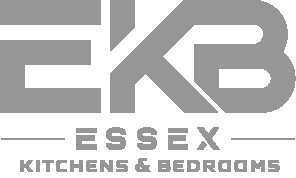FLOORING EXPERTS
When creating their dream home, people want to choose the best flooring possible; in terms of aesthetics and what will suit their lifestyle. Tiled floors are no longer only associated with kitchens and bathrooms; they also look great in living rooms, dining rooms and hallways. It can be a sophisticated way to connect the inside of your home with the garden.
Suitable for modern as well as period homes, a high-quality area of tiled flooring in your house could add the finishing touches to the overall look of a room and gives a professional finish. What looks better than decorating a room in your new home and completing it with a stunning new floor? The history of the tiles can even make for an interesting talking point, after all, a natural stone always has a story to tell.
Below is our interior designers Essex expert knowledge of each stone and their origin that we use for tiling at Essex Kitchens & Bedrooms. We can help you find the perfect flooring material and recommend the best type of tiles Essex for specific areas.
LIMESTONE
Limestone comes from sedimentary rock that was formed during the Jurassic period. It’s deposits of shells collected on the seabed that have been compressed over millions of years. In this country, limestone is found in the Peak District and the Cotswolds. However, most of the limestone we use comes from Turkey. Limestone is generally softer and less durable than marble. The lighter the limestone, the softer it is.
TRAVERTINE
This is a natural stone that has been formed in hot springs or limestone caves. Formed on land rather than in the ocean, it comes in a variety of earth tones including tan, brown, rust and beige. The signs of weathering that the tiles show demonstrates the processes that have happened over time which, we feel, really adds character. While it is extremely hardwearing, travertine does have open pores so extra care is required with spillages.
SLATE
Every floor created with slate will be one of a kind. Slate is a fine-grained metamorphic rock composed mainly of clay or volcanic ash. The colour is largely determined by the amount of iron it contains. Slate is very hardwearing and is resistant to cracks, breaks, scratches and chips, so it’s often a popular choice for a busy home.
PORCELAIN
Porcelain is consistent in composition. It has a solid colour and a pattern that runs through the entirety of the tile, rather than just on the surface, which means it will not diminish with use. Denser and heavier than ceramic tiles Essex, porcelain can be challenging to cut and drill, so specialist tools are required. Porcelain is one of the toughest flooring options, and so it’s ideal for heavy and commercial use. Like ceramic tiles, porcelain is made up of clay and sand, however, the porcelain tiles are fired at a much higher temperature and for longer to remove almost all of the water.
These are just a small range of our existing options here at our tile showroom in Essex. Keep your eyes peeled for part two next week. If you would like further information or like to speak to one of our kitchen experts, get in touch by calling 01621 893491.[/vc_column_text][/vc_column_inner][/vc_row_inner][/vc_column][/vc_row]



